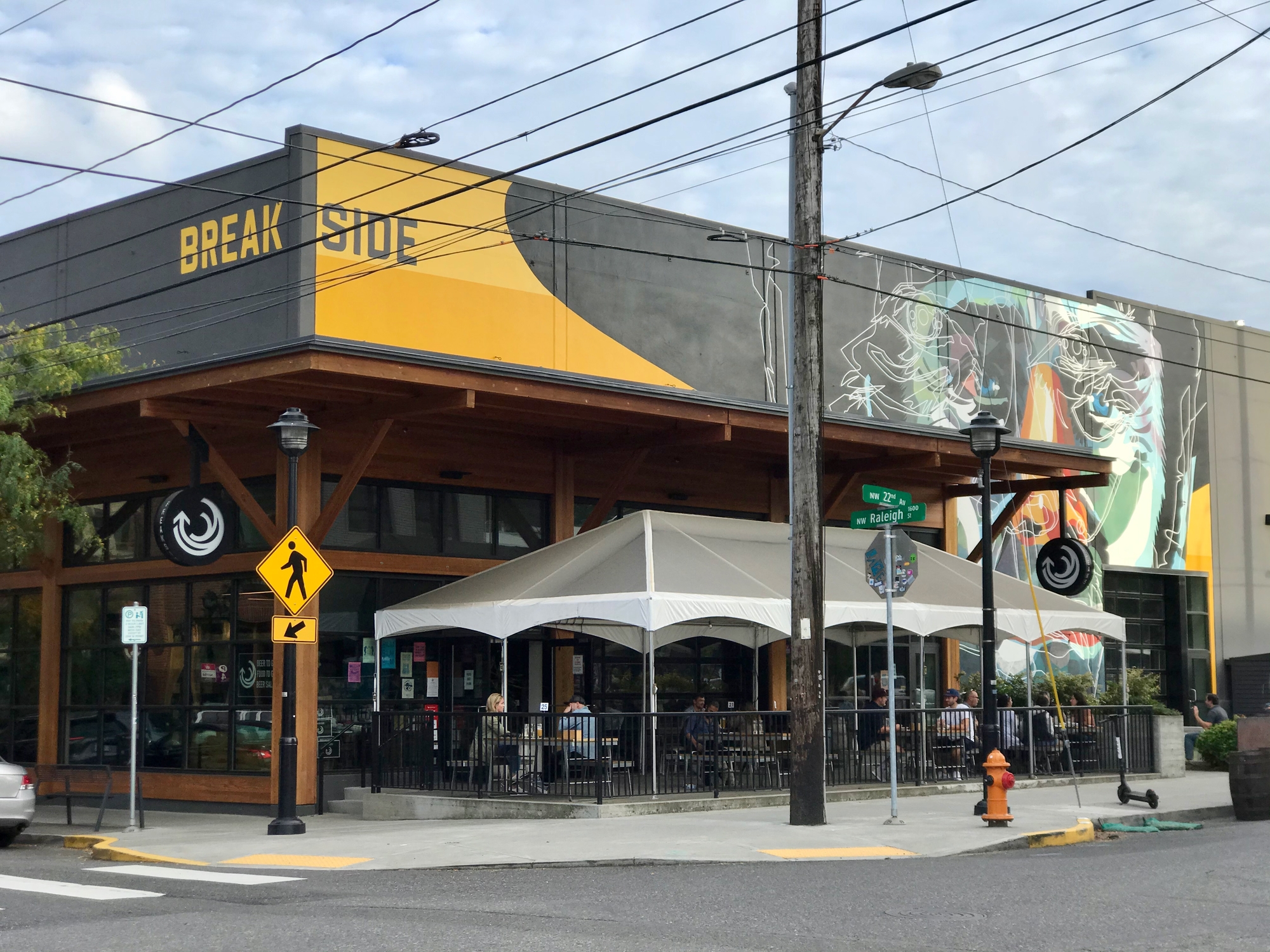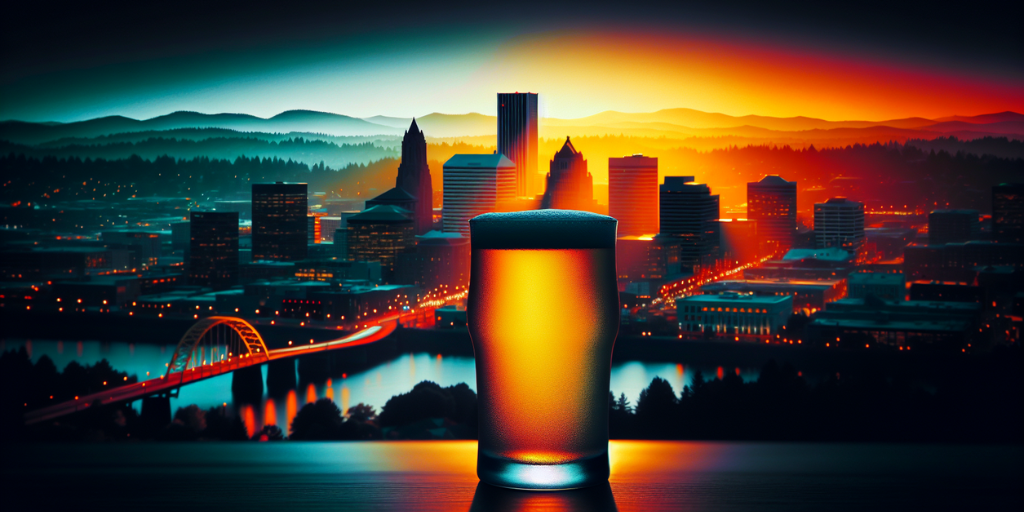Portland stands as a vibrant epicenter of beer culture, a city where the legacy of hops and barley is as rich and diverse as its landscape. From the ubiquitous IPAs to the robust Imperial Stouts, the Rose City’s beer-centric history is interwoven with the fabric of its local culture, embodying a tradition that predates Oregon’s statehood. This deep-rooted heritage, combined with a community that cherishes its local breweries, has firmly placed Portland on the map as one of the premier beer destinations in the country.
As of the beginning of this decade, the state of Oregon proudly ranks fourth nationwide in the total number of breweries and tenth in craft breweries, reflective of a burgeoning industry that spans from the scenic Willamette Valley to the bustling streets of Portland itself. Approximately sixty local companies, many with multiple brewing locations and tasting rooms, contribute to a dynamic and ever-evolving beer scene. This thriving ecosystem not only celebrates the craftsmanship behind brewing but also fosters a sense of community and innovation amongst brewers and beer lovers alike.
Pioneering Brews: The Dawn of Oregon’s Beer Scene
Oregon’s brewing history notably predates its official statehood, with the inception of the Portland Brewery and General Grocery Establishment in 1854. This venture, initiated by English immigrant Charles Barrett, marked a pioneering moment in the local brewing scene, occurring even before Oregon was recognized as a state. Situated on Front Street, this establishment served as a brewery and a general store, offering an eclectic mix of goods from salt ham to sperm candles and stone jugs to matches.
Shortly after Barrett’s establishment came to life, the brewing landscape in Oregon received further momentum with the opening of the Liberty Brewery in 1856 by Swiss immigrant Henry Saxer. Recognized as the state’s first commercial brewery, Saxer’s venture laid the foundation for Oregon’s rich brewing tradition. This era was characterized by an entrepreneurial spirit and a burgeoning industry that would soon spread across the state.
By 1859, when Oregon finally achieved statehood, breweries had already become a staple in several of its cities, including Jacksonville, Oregon City, The Dalles, and Portland itself. This period witnessed a proliferation of small-scale breweries, catering primarily to workers from the logging, fishing, mining, and canning industries, essentially quenching the thirst of those who were building the state from the ground up.
Building the Brew: Foundations of Oregon’s Beer Production
In the late 19th century, the infrastructure of breweries across Oregon was decidedly straightforward. The essential brewing apparatus comprised storage areas for grain, kettles for boiling, a mash tun for mixing, and facilities for fermenting the brew. While bottling operations were often conducted off-site, some breweries eventually incorporated this step on-premises as part of their expansion efforts.
Despite their simplicity, This era’s breweries could produce up to 15,000 barrels per year. They employed a workforce of about ten to fifteen individuals, underlining the brewing industry’s growing significance in the local economy. These breweries were more than just production sites; they were pivotal in fostering community and supporting the state’s burgeoning workforce.
The efficient movement of goods, facilitated by the well-established transportation networks within the Willamette Valley, was crucial for these early breweries. This strategic advantage allowed for the smooth import of necessary ingredients and export of the finished product, ensuring the flow of Oregon’s beer far and wide.
Dry Times: Navigating Prohibition’s Impact on Oregon Breweries
The onset of Prohibition in Oregon, initiated in 1914—a full five years ahead of the ratification of the 18th Amendment—significantly altered the landscape of the state’s brewing industry. This early embrace of alcohol prohibition saw the closure of numerous breweries that had thrived since the mid-19th century. During this volatile period, Oregon had been home to an estimated 100 breweries, a testament to the state’s rich brewing heritage that spanned from 1854 to 1914.
Many of these breweries were operated by German immigrants who had brought with them the art of brewing steam beer and German lagers, in addition to crafting porters and a variety of ales. Their contributions had enriched Oregon’s drinking culture, offering a diversity of beer that mirrored the broader spectrum of the community itself. However, the implementation of Prohibition forced these establishments to either cease operations or pivot dramatically to remain in business.
In an effort to adapt, facility owners repurposed their breweries for a range of inventive uses. Some converted their operations into factories for denatured alcohol. In contrast, others ventured into alternative commercial endeavors, transforming their spaces into candy stores, or producing clothing dye from yeast, mushrooms, and even sauerkraut in beer kegs. During this period of ingenuity, they showcased the community’s resilience, finding novel ways to utilize spaces that had once been central to Oregon’s brewery scene.
Nonetheless, the hops industry was among the first to rebound after the repeal of Prohibition, particularly after World War I. Oregon’s hop production, which had been significantly impacted by the war’s adverse effects on European agriculture, began making steady gains. Throughout the 1920s to 1940s, the state emerged as the nation’s premier producer of hops, earning the prestigious title of the “Hop Center of the World.” This resurgence underscored the enduring spirit of Oregon’s brewing industry, poised for a vibrant revival in the years to come.
Craft Beer Revolution: Oregon’s Brewing Renaissance
In the late 20th century, we witnessed a remarkable transformation within Oregon’s brewing industry, significantly influenced by a period of considerable growth and consolidation. By the 1970s and 1980s, the major breweries had come to dominate the market, producing 93% of the nation’s beer. However, this era also heralded the beginnings of a craft beer renaissance in Oregon, signaled by the innovative endeavors of local breweries like Columbia River Brewing, which would later be known as Bridgeport.
The evolution of the brewing scene continued with Widmer Brewing’s emergence in the 1980s and their flagship, Hefeweizen. This period of innovation they attracted attention far and wide, leading Anheuser-Busch to invest in Widmer Brewing, marking a significant moment in the state’s craft beer history. Such developments underscored the growing recognition and appreciation for Oregon’s unique contributions to the broader beer industry.
The inception of the Oregon Brewers Festival in the 1980s further cemented the state’s stature within the national craft beer community. Celebrating its status as one of the nation’s longest-running and largest craft beer festivals, this event epitomizes the vibrant beer culture that has become synonymous with Oregon. This festival, alongside the pioneering efforts of local breweries, propelled the state into a new era of brewing excellence, continuing to draw enthusiasts and connoisseurs from across the globe.
Oregon’s Brews: Charting Contemporary Beer Crafting

Breakside Brewery
In the current era, the Oregon Brewers Guild, established in 1992, is pivotal in supporting and advocating for the state’s flourishing brewery landscape. This nonprofit organization’s work ensures that Oregon’s rich brewing tradition and innovative spirit continue to thrive and evolve. Oregon State University contributes significantly to this legacy through its esteemed Fermentation Science program, which has been nurturing future brewers since 1995.
As of the latest count at the start of the decade, Oregon is proud to host 400 craft breweries. This bustling ecosystem fosters creativity and innovation within the brewing sector and contributes significantly to the local economy. With nearly 50,000 jobs generated and nearly $9 billion in economic output, the craft brewing industry is a robust pillar of Oregon’s economic landscape. Craft Breweries are the third largest source of revenue for the state of Oregon.
Raising a Glass to Oregon’s Brewing Legacy
From its humble beginnings in the mid-19th century to its booming presence in the modern era, Oregon’s beer culture has undergone a dynamic evolution. The pioneering efforts of early settlers laid the groundwork for a rich brewing tradition that has weathered Prohibition and flourished into a cornerstone of the state’s economy. Today, as we celebrate the diversity and creativity of over 400 craft breweries, Oregon stands proudly as a trailblazer in the craft beer renaissance, contributing significantly to both the local and national beer scenes.
As this journey unfolds, the story of Oregon’s beer culture mirrors the broader narrative of resilience, innovation, and community that defines the state. The Oregon Brewers Guild and programs like Oregon State University’s Fermentation Science serve as testaments to the enduring spirit and passion that drive the Oregon beer community forward. As we raise our glasses to the future, the legacy of Oregon’s breweries—past, present, and future—continues to inspire and unite beer lovers from all walks of life.









